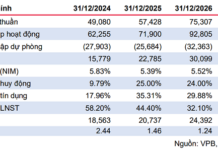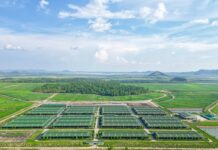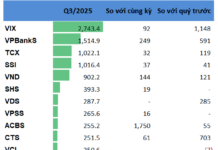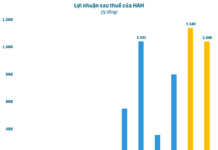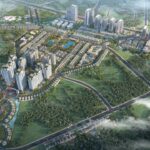This content has garnered significant attention due to its direct relevance to the progress of numerous economic and social development projects, as well as the rights and interests of citizens.
Adding Three Cases for State Land Reclamation
Presenting the proposal, Minister of Agriculture and Environment Tran Duc Thang stated that the draft resolution consists of three chapters with 13 articles, focusing on addressing bottlenecks in the implementation of the 2024 Land Law.
According to the Minister, one of the notable aspects of the draft resolution is the addition of three cases where the State can reclaim land for economic and social development in the national and public interest. This is considered the core of the resolution, aimed at resolving long-standing issues in land clearance for projects.
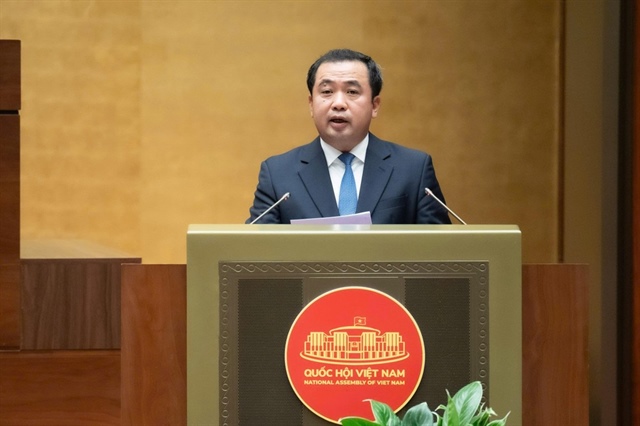
Minister of Agriculture and Environment Tran Duc Thang. Photo: QH |
These cases include:
Implementation of free trade zone projects and international financial center projects.
In cases where land is used for projects through land use rights agreements, if the agreed-upon time limit expires or the extended time limit expires with over 75% of the land area and over 75% of land users agreeing, the Provincial People’s Council may consider and approve the reclamation of the remaining land area to allocate or lease land to the investor.
Creating land funds for payment in Build-Transfer (BT) contracts, or leasing land for continued production and business in cases where organizations are using land that the State reclaims as per Articles 78 and 79 of the Land Law and Clause 1, Point a of Clause 2 of this Article.
Clarification Needed on the 75% Threshold
Reviewing this content, Chairman of the Economic and Financial Committee Phan Van Mai stated that the majority of the committee’s opinions believe this policy proposal aims to untangle bottlenecks in implementing economic and social development projects through land use rights agreements.
“This mechanism facilitates investors who have negotiated most of the land area but face difficulties in completing land clearance to implement projects on schedule,” Mr. Mai emphasized.
However, the reviewing agency requested further clarification on the basis for proposing the land area ratio and the ratio of agreeing individuals; the mechanism for handling the remaining land area when the investor has agreed on over 75% of the land area and received consent from over 75% of land users within the project scope.
“Handling the remaining land area and the remaining land users must ensure human rights and citizens’ rights as stipulated by the Constitution, minimizing complaints and lawsuits,” Mr. Mai said.

Chairman of the Economic and Financial Committee Phan Van Mai. Photo: QH |
Additionally, the reviewing agency suggested the need for regulations that balance interests when calculating compensation, avoiding potential complaints and lawsuits when applying land price tables and adjustment coefficients to calculate compensation for remaining cases, as land prices in the price table are often lower than the average agreed-upon price.
Mr. Mai also mentioned that some opinions suggest the addition of land reclamation cases should be carefully considered, ensuring compliance with the Constitution and avoiding impacts on citizens’ rights; it should not be widely applied before specific impact assessments are conducted. Reports can be made to competent authorities to allow pilot mechanisms for some cases proposed by the Government in localities with National Assembly resolutions on special mechanisms and policies, providing a basis for comprehensive amendments to the Land Law in the future.
|
The draft resolution also specifies principles for land pricing, information collection timing, and land pricing methods. Accordingly, land pricing must adhere to the following principles: Market-based pricing methods. Compliance with pricing methods, procedures, and processes. Ensuring honesty, objectivity, transparency, and publicity. Ensuring independence between land price consulting organizations, land price appraisal councils, price adjustment coefficient appraisal councils, and authorities or individuals with land pricing decision-making powers. Ensuring a balance of interests among the State, land users, and investors. The draft resolution states that land price tables are constructed by land type, area, and location. For areas with digital cadastral maps and land price databases, land price tables are constructed down to individual land plots. Provincial People’s Councils decide on land price tables, which are announced and applied from January 1, 2026, with amendments and supplements made as necessary. The draft resolution stipulates that the Chairman of the Provincial People’s Committee decides on the establishment of land price appraisal councils and price adjustment coefficient appraisal councils, with the Chairman or a Vice Chairman of the Provincial People’s Committee serving as the council chairman. |
REPORTING TEAM
– 15:48 18/11/2025
Vingroup to Pay Over VND 8,000 Billion in Land Compensation for Project in Billionaire Pham Nhat Vuong’s Hometown
In November, officials are expected to finalize the land and asset inventory, followed by the verification of land origins and the development and publication of compensation plans.
How to Efficiently Allocate and Spend Over 400 Trillion VND in Public Investment Within Just 2 Months?
After more than 10 months, Vietnam has disbursed VND 495 trillion in public investment capital, equivalent to 54.9% of the plan. This leaves over VND 400 trillion still awaiting allocation in the final two months of the year—a critical period to boost growth and achieve this year’s targets.





